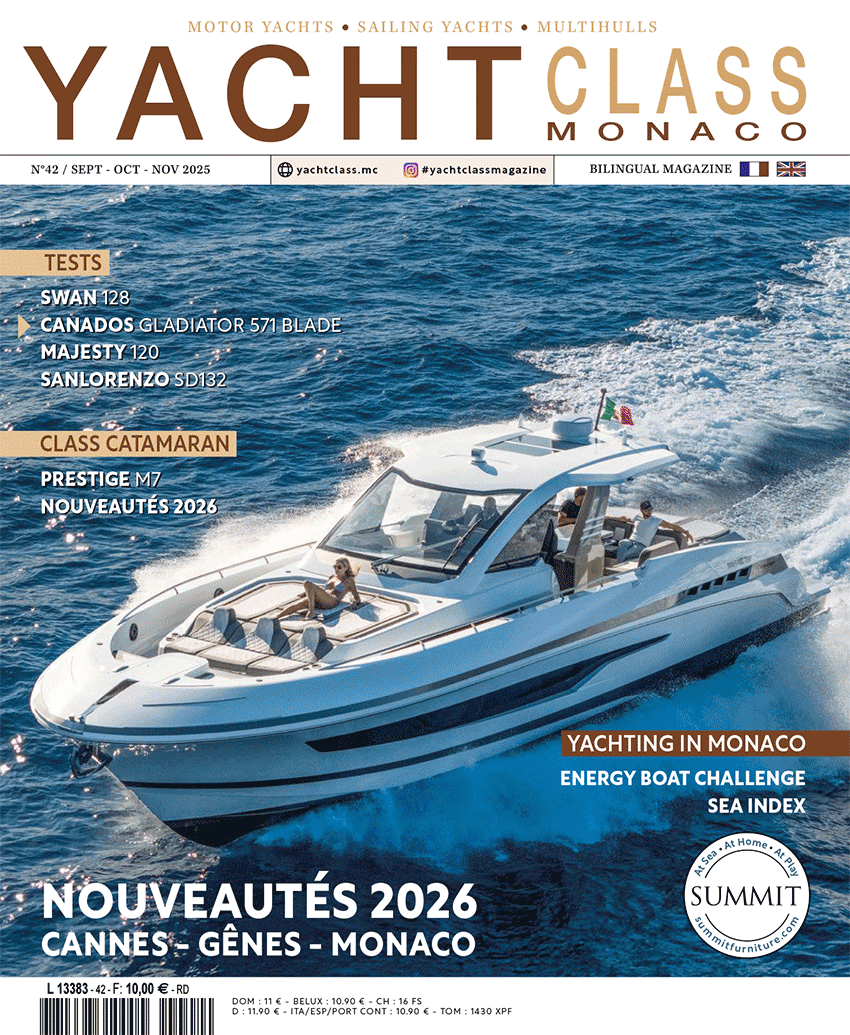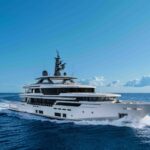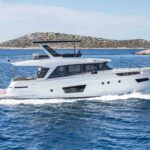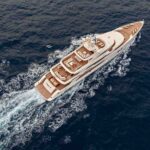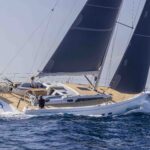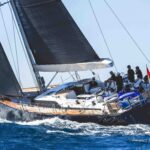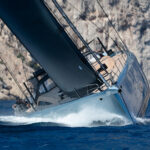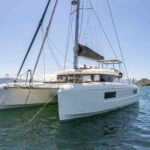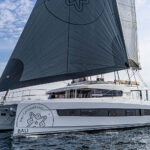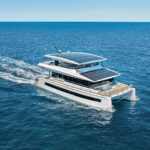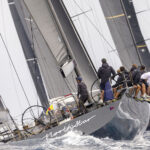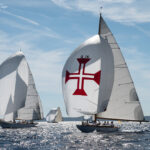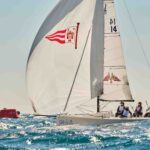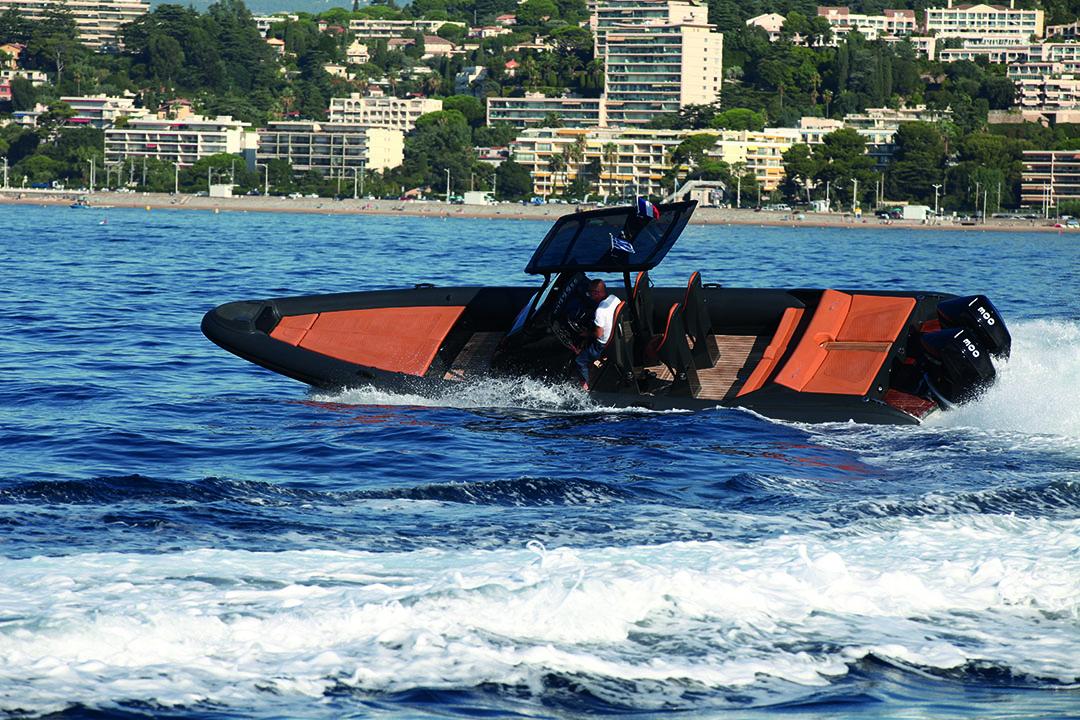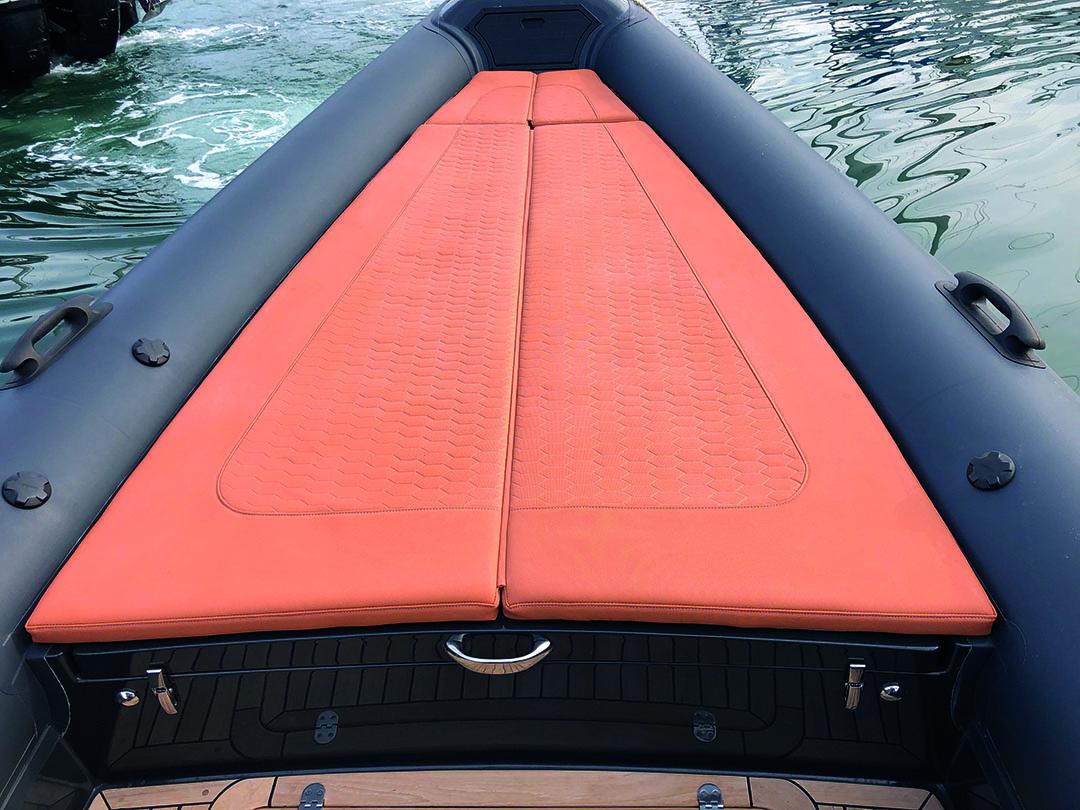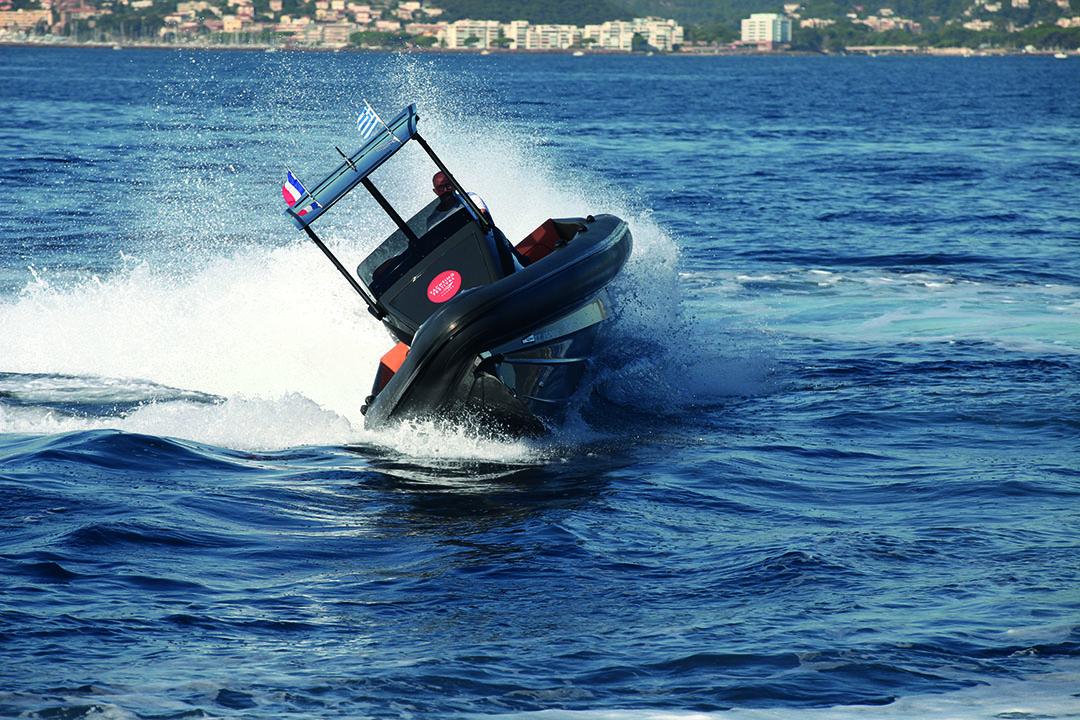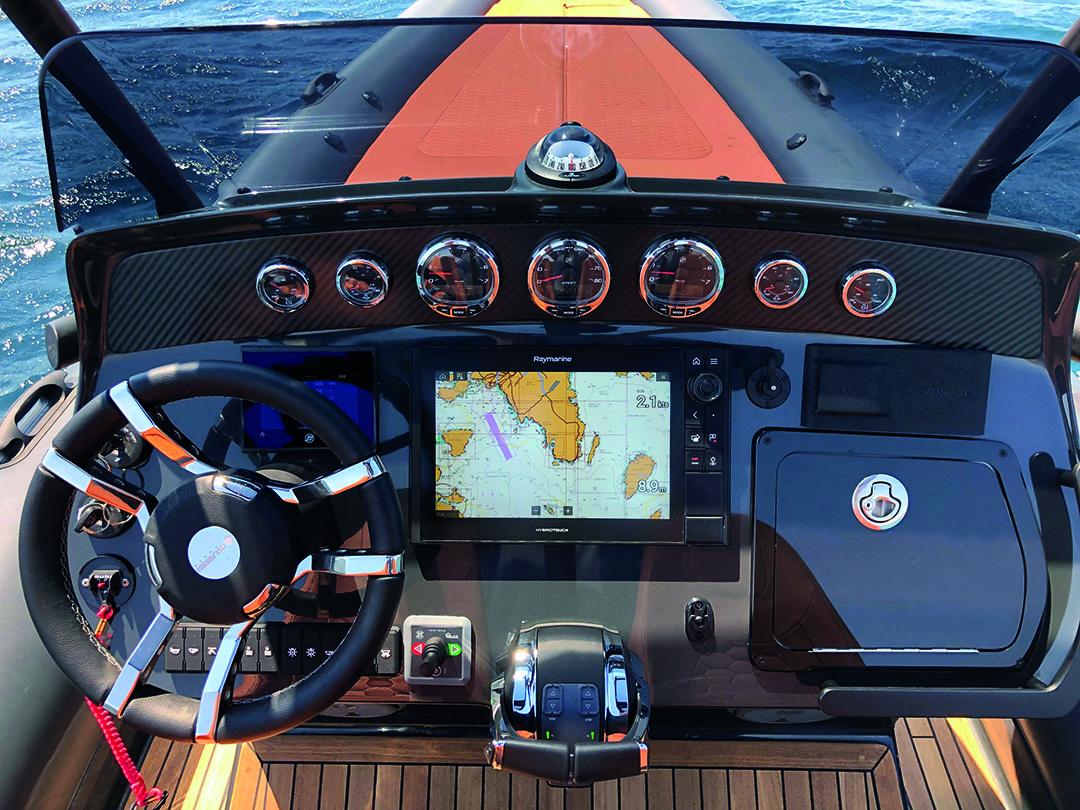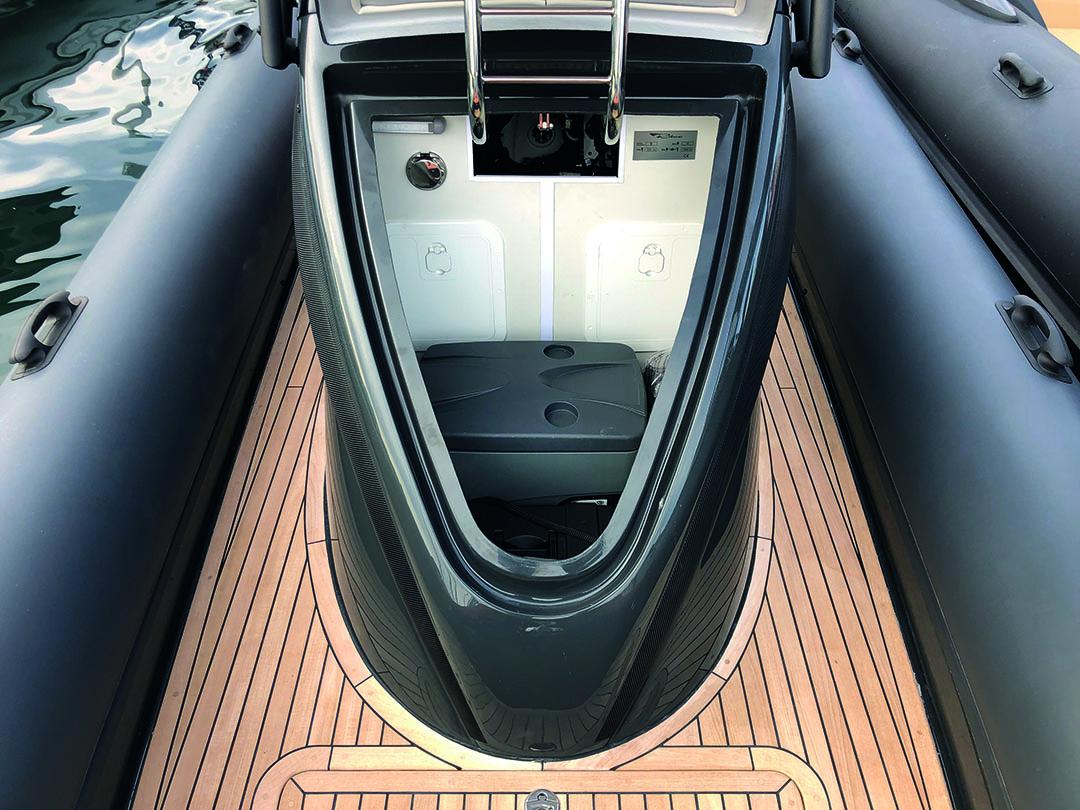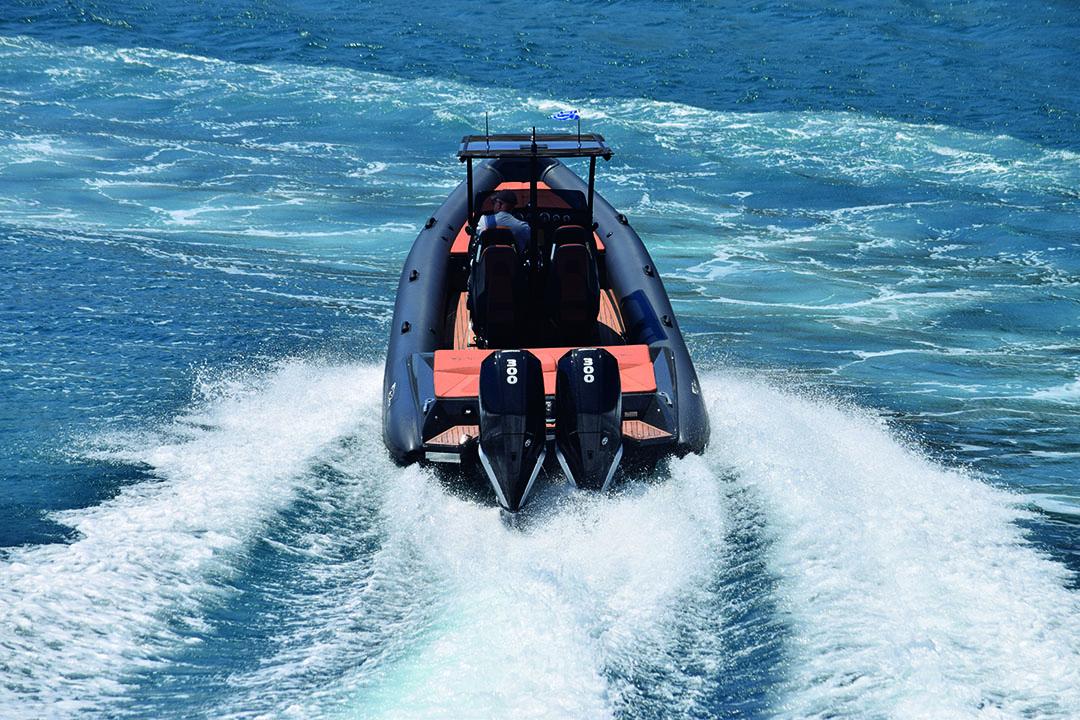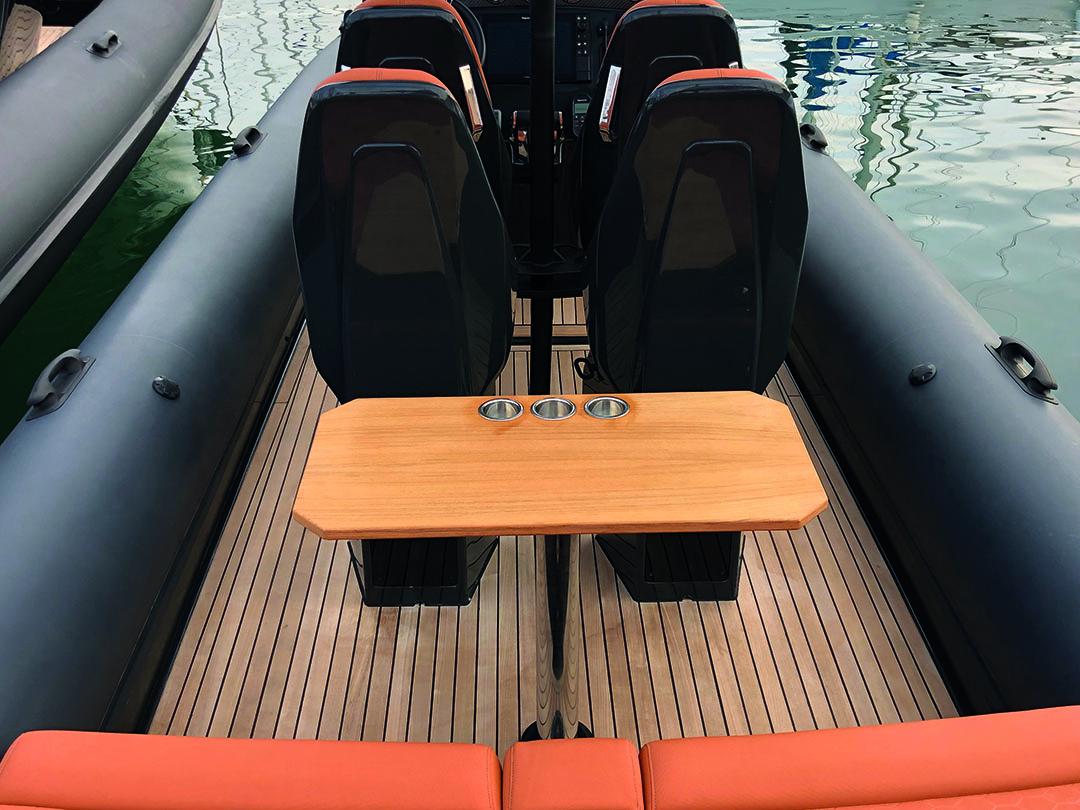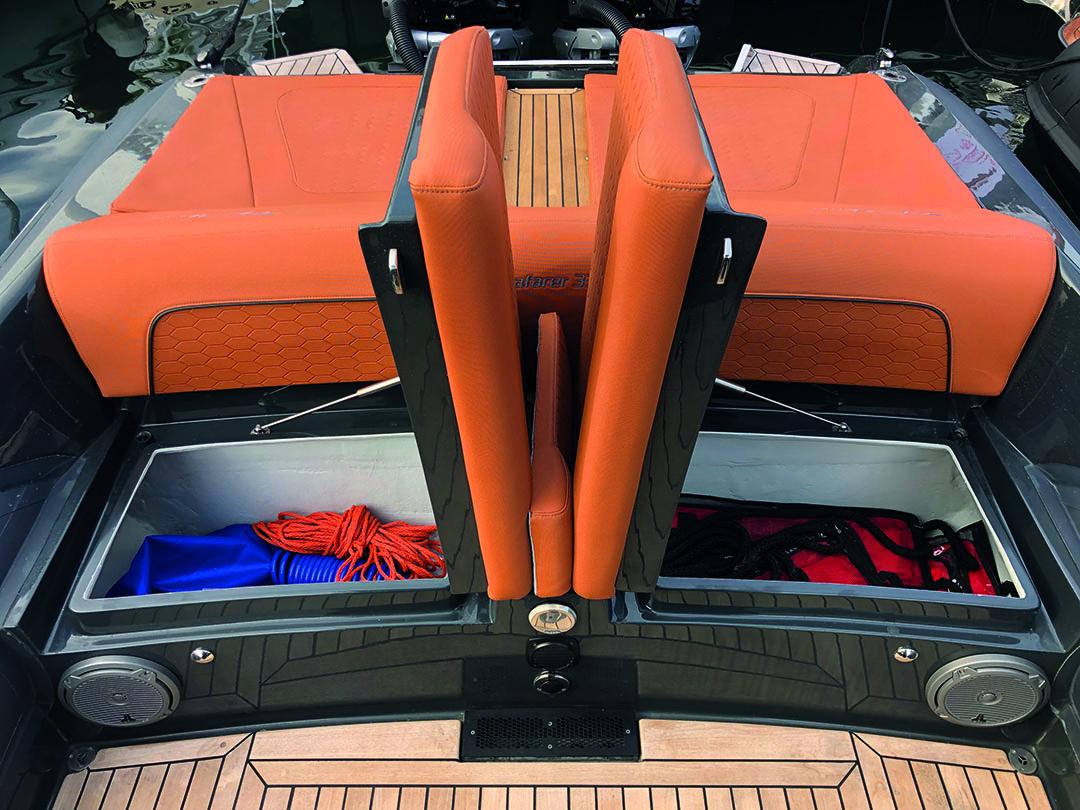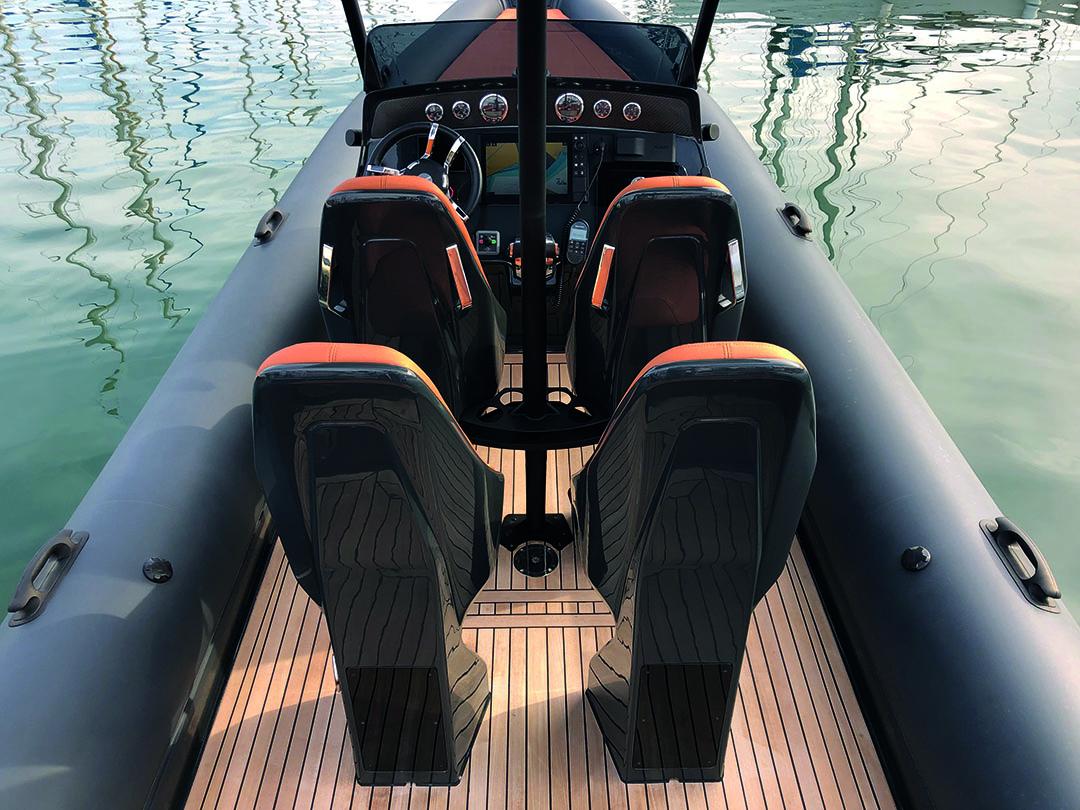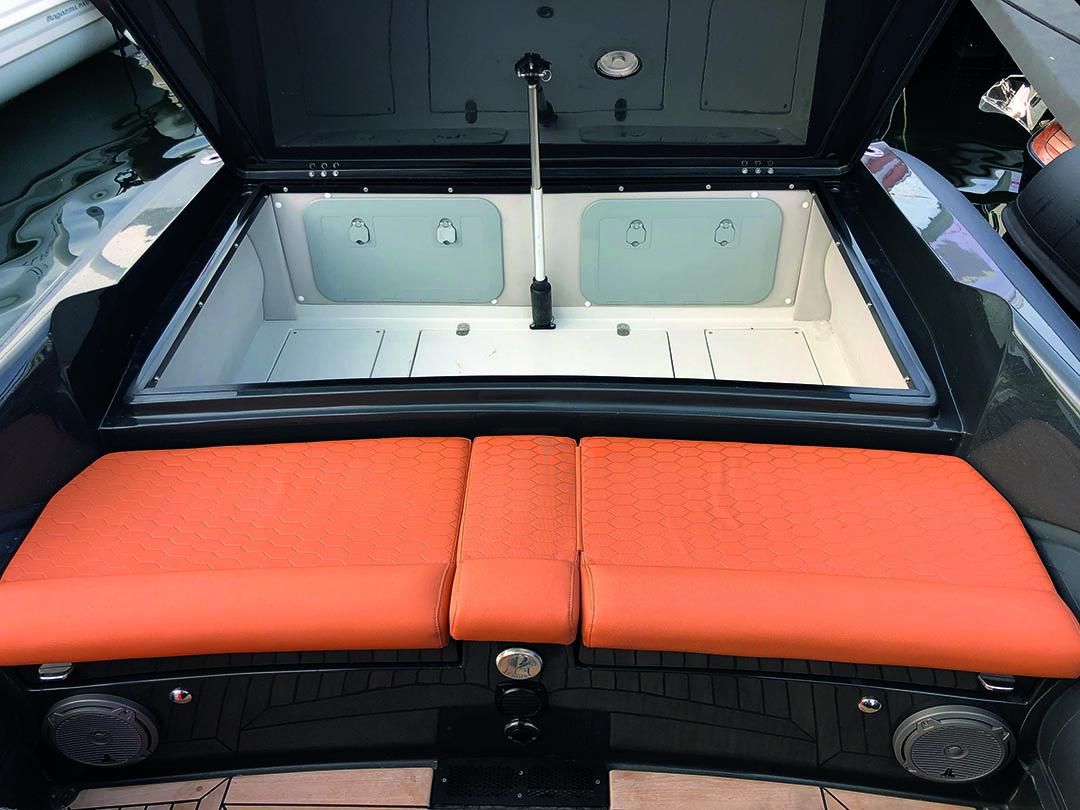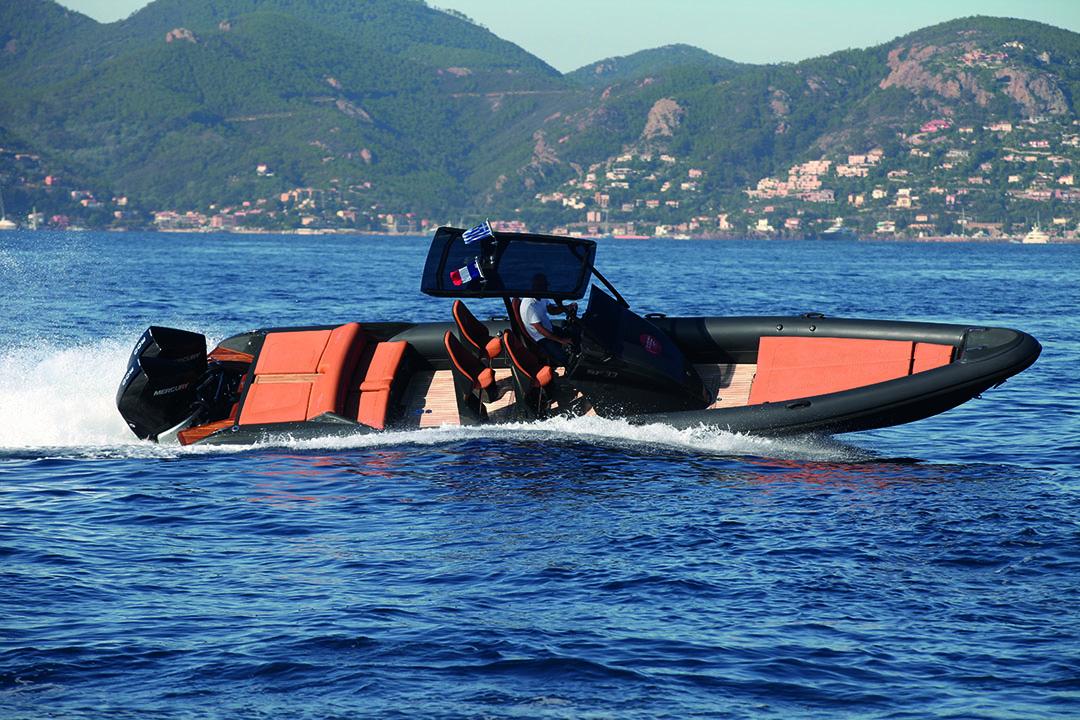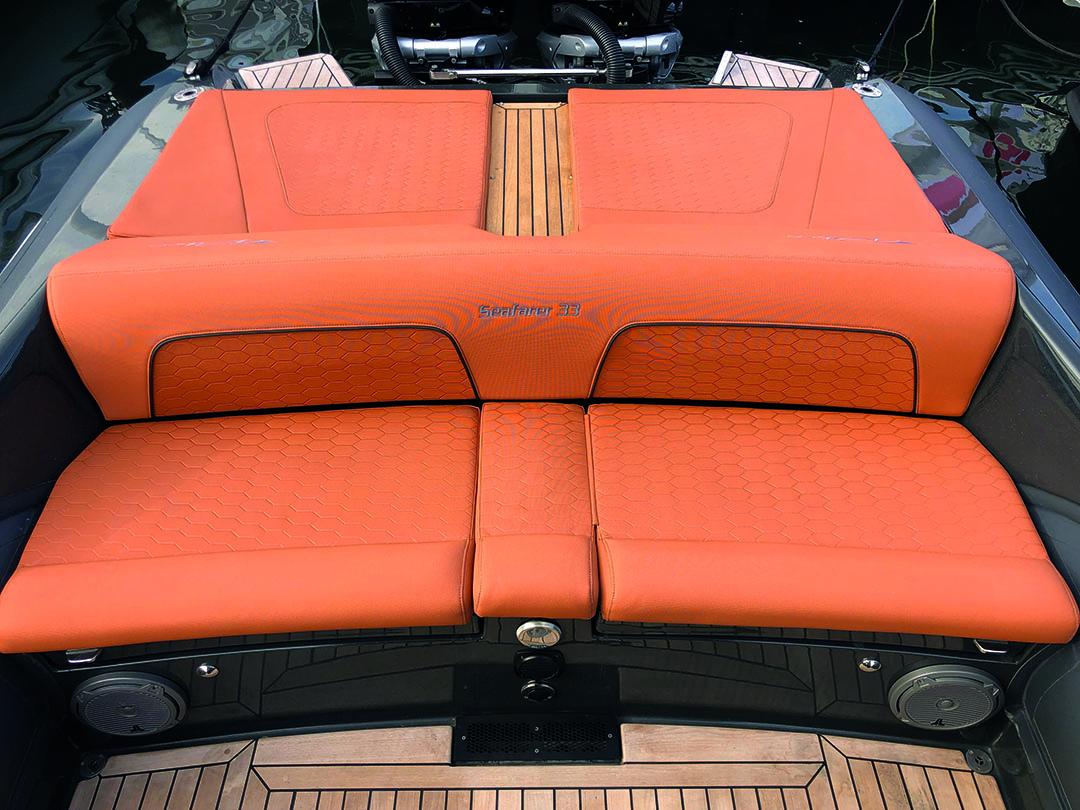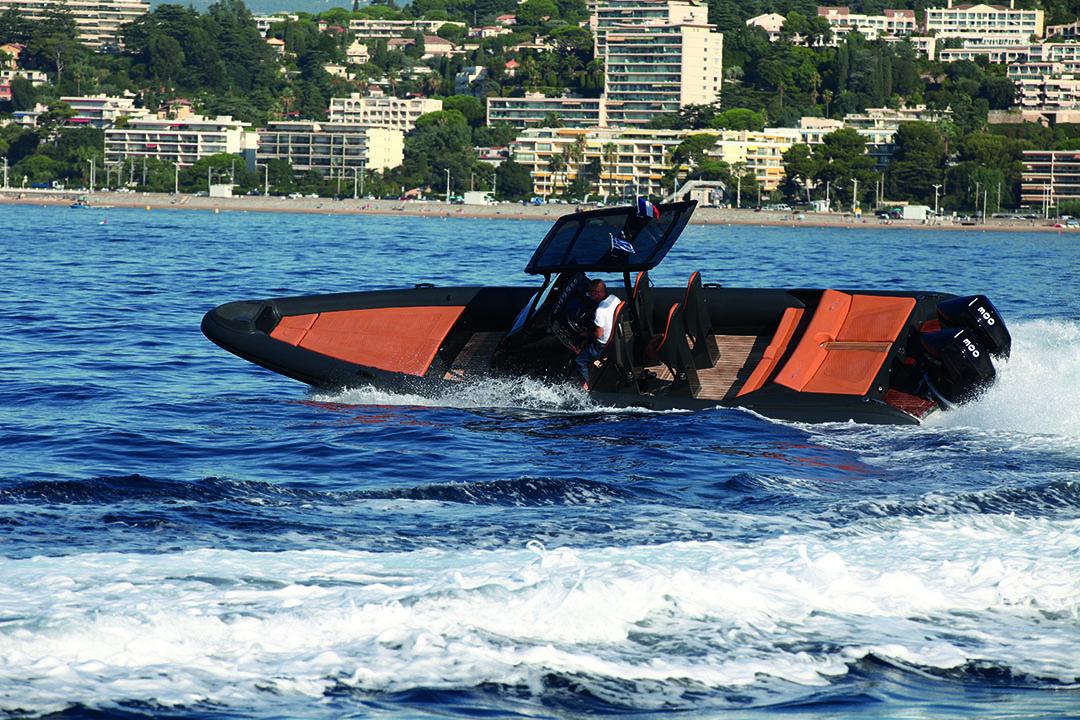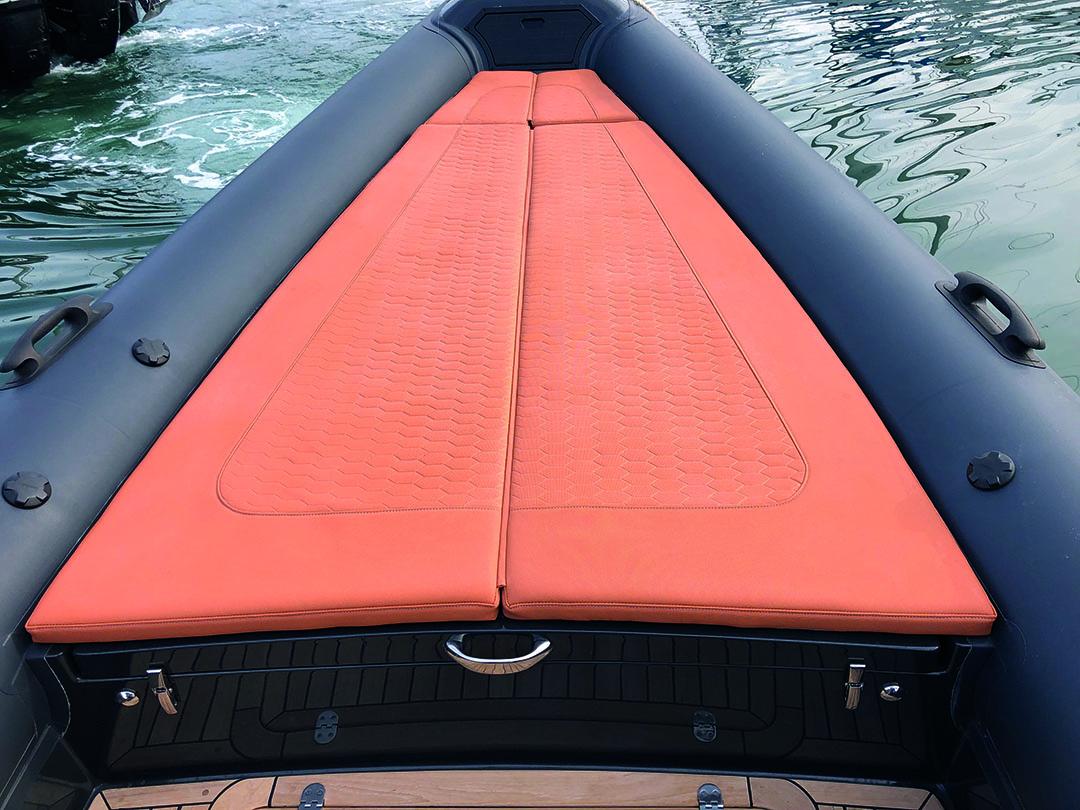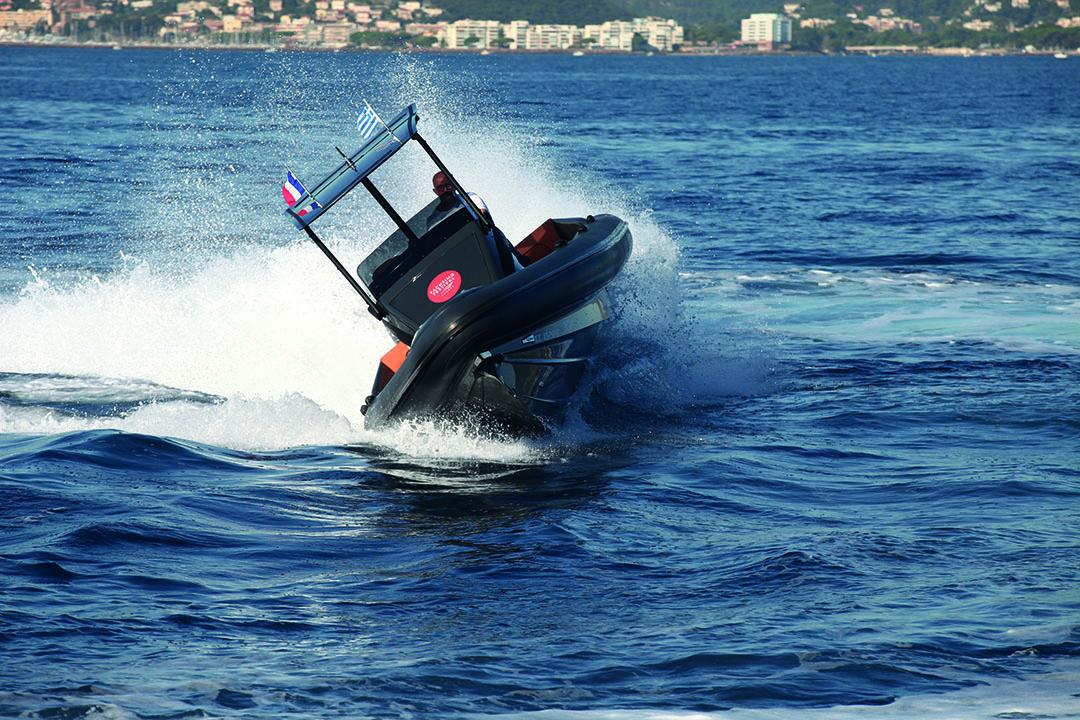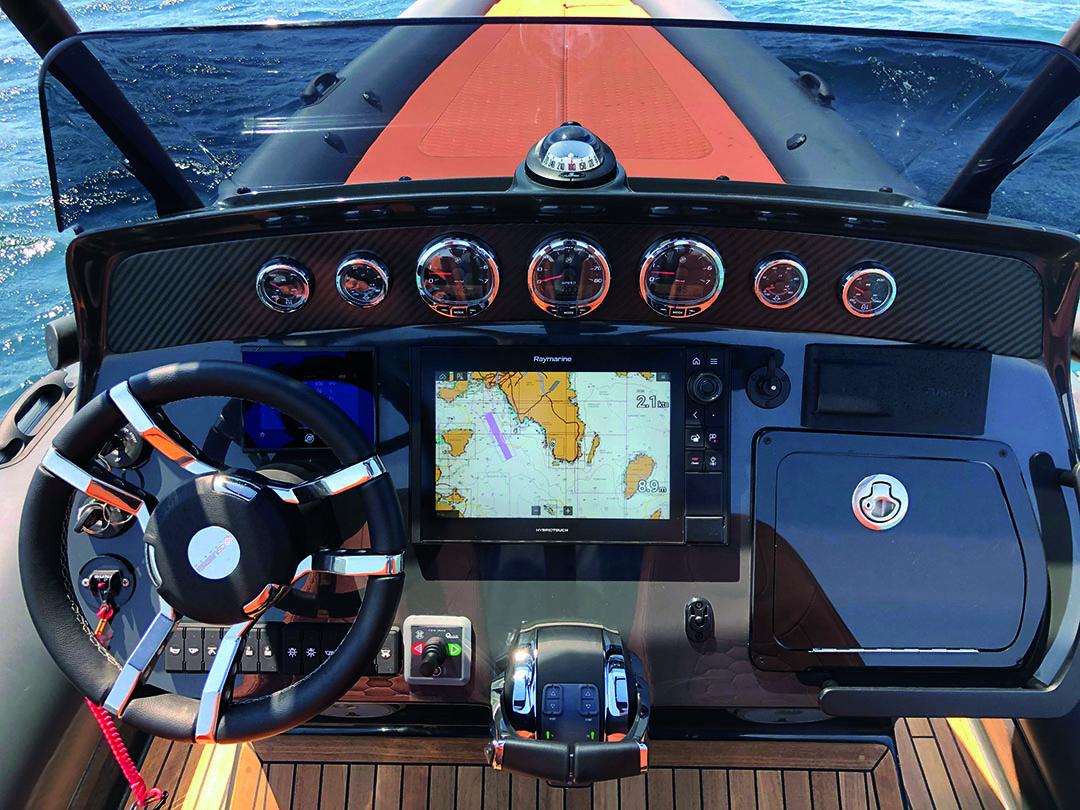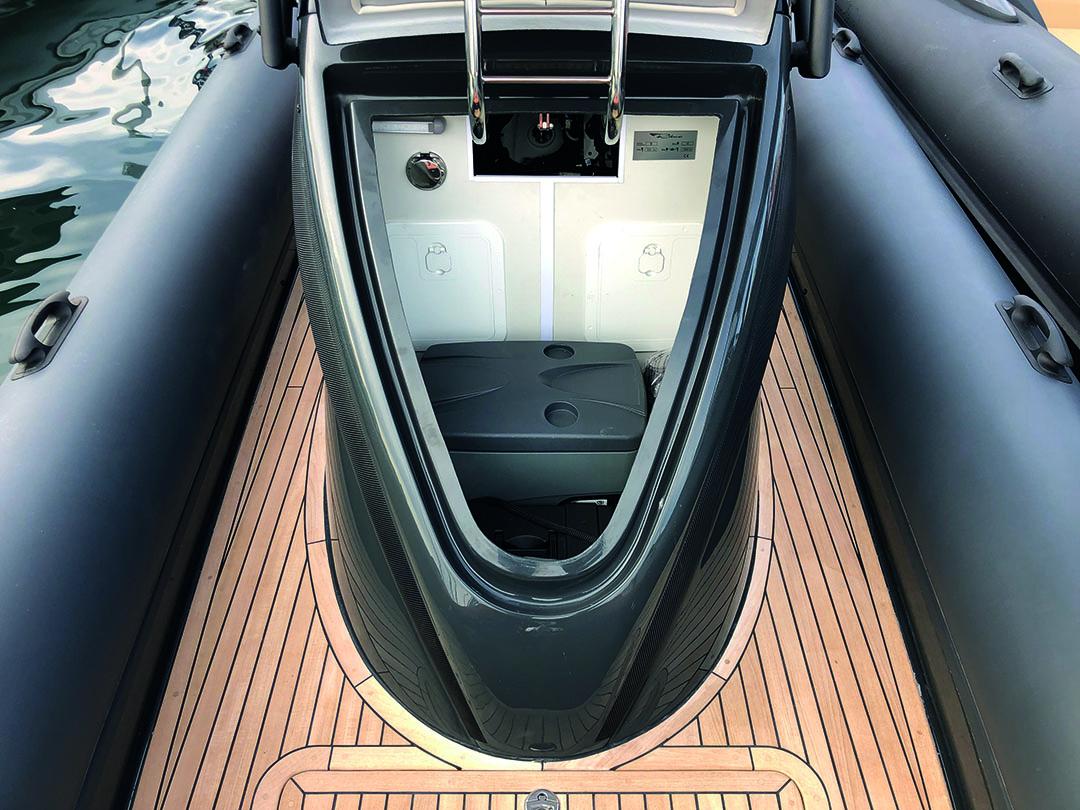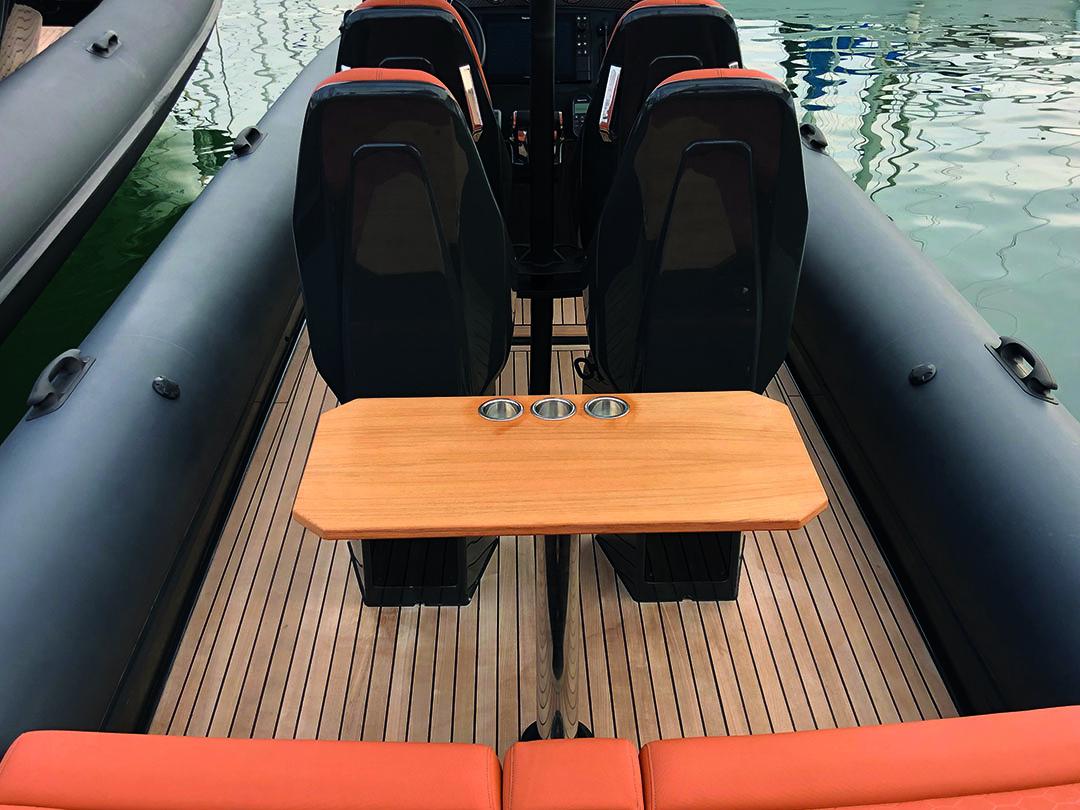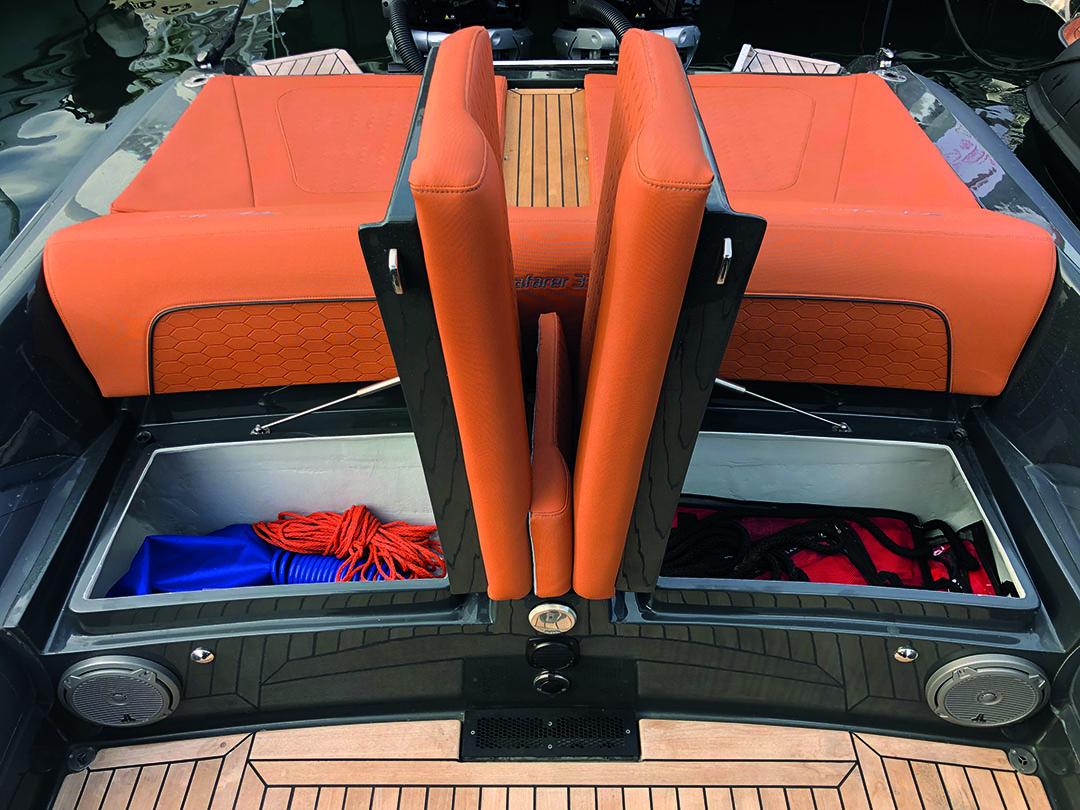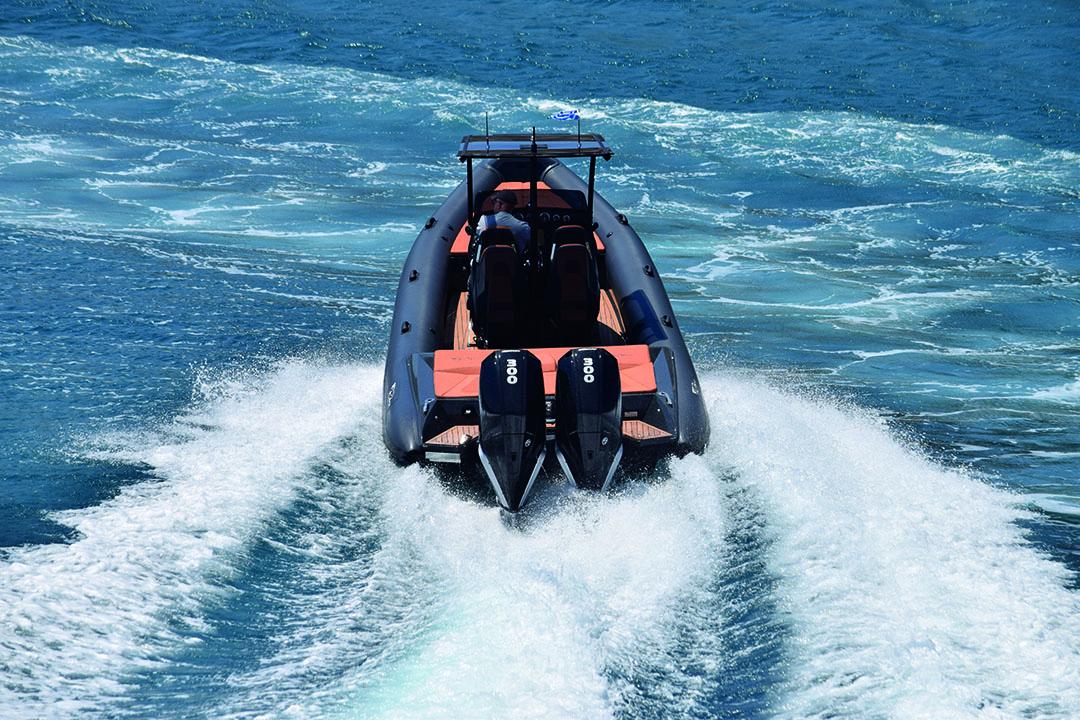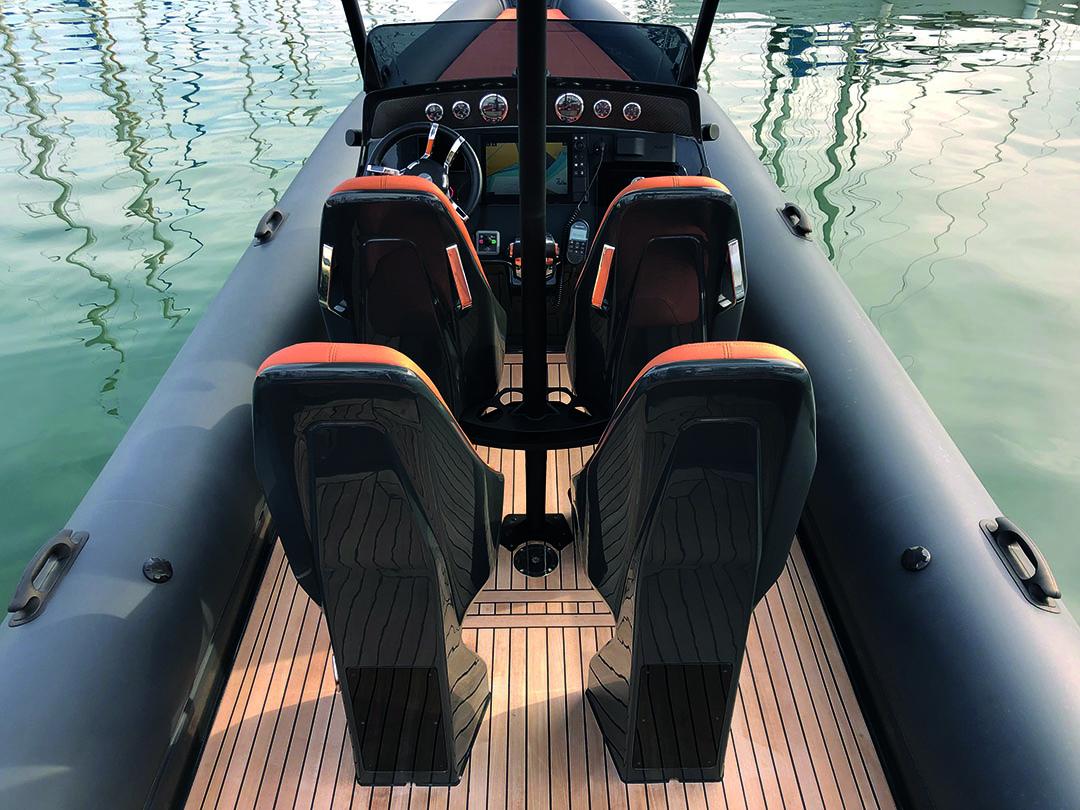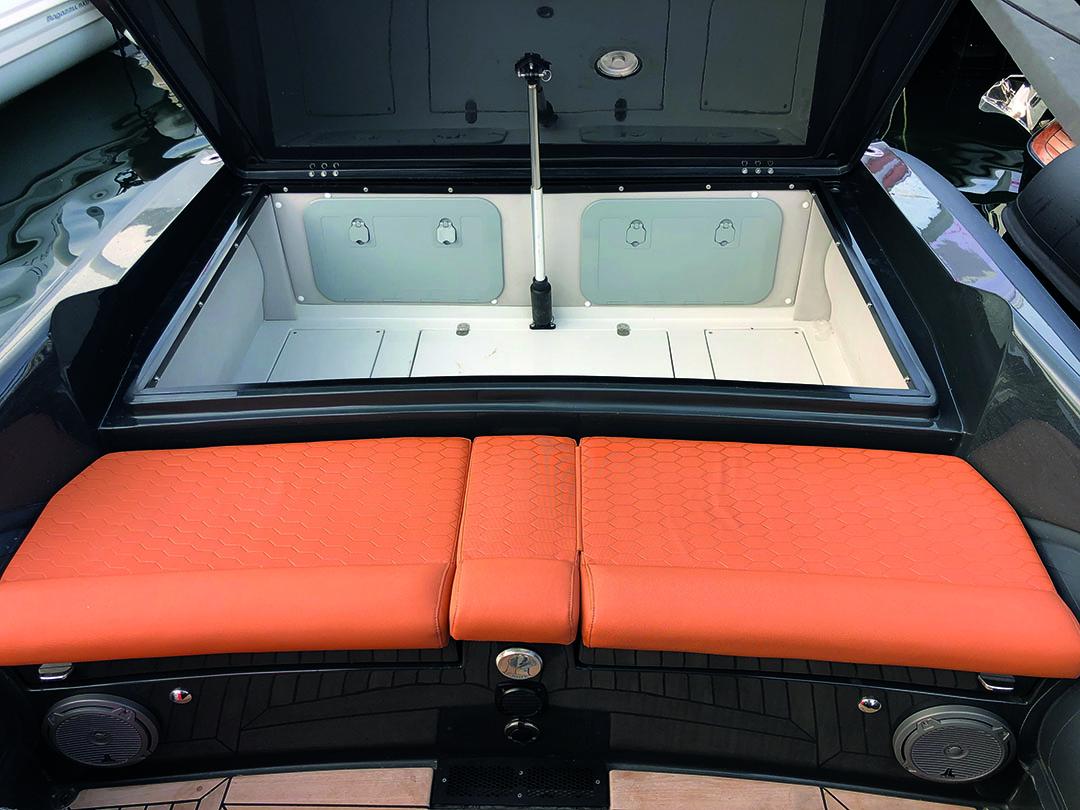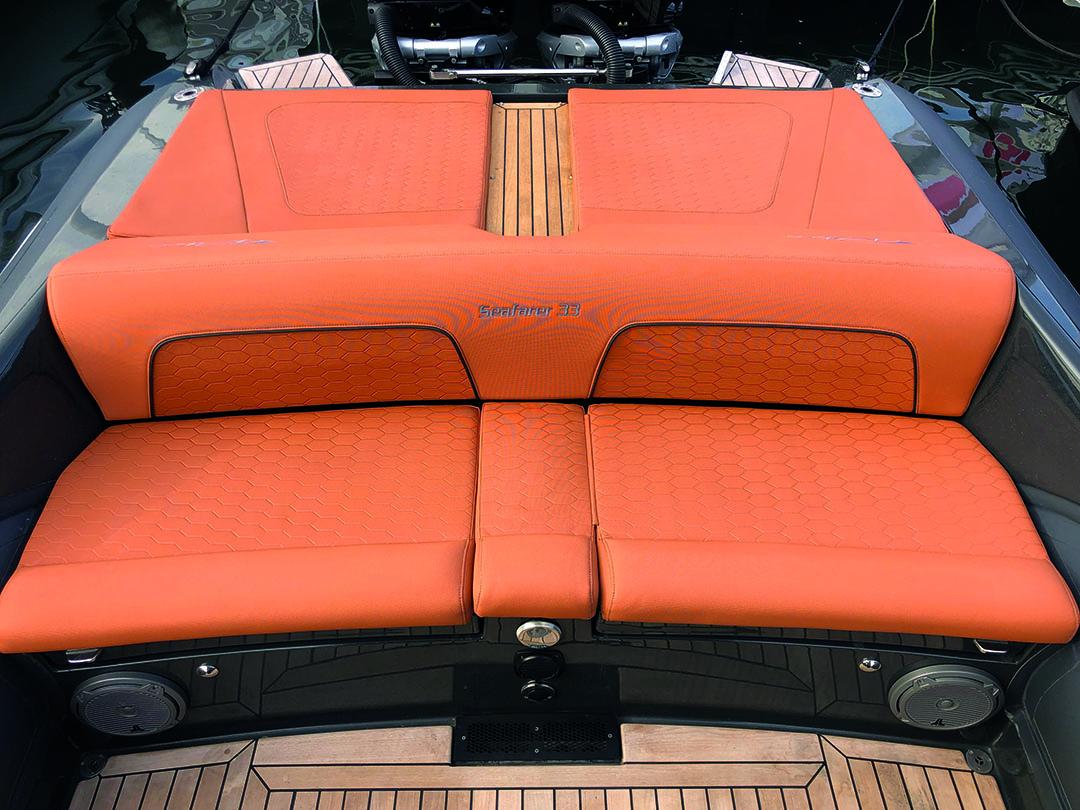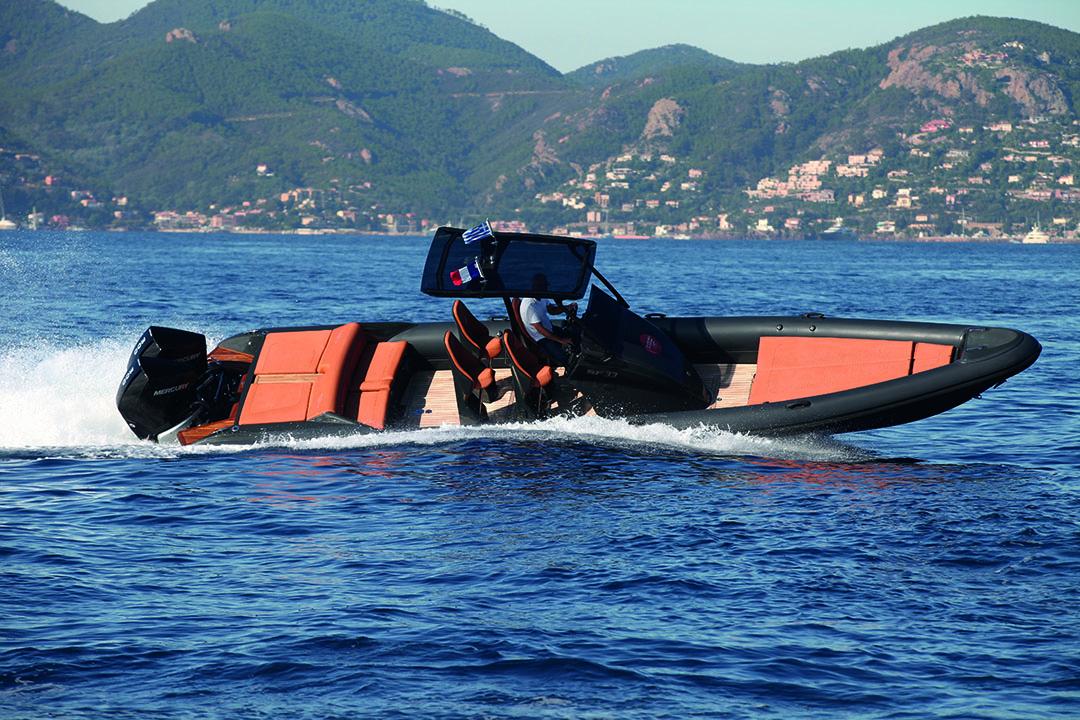Presentation
Yacht Class n°19 (dec 2019/jan-feb 2020)
Ribco
Pleasant to steer, this fast RIB built in Greece is designed to withstand high speed averages in heavy seas but also to offer comfortable stopovers in Mediterranean inlets. Its offshore DNA perfectly coexists with comfort. A winning cocktail !
Written by Philippe Leblond – Photos : Philippe Leblond et All rights reserved
Some may have noticed a certain similarity between the Seafarer 33 and the Scorpion Serket 98. And rightly so… as the Greek shipyard Ribco has built for many years under licence models derived from the British Rib builder Scorpion. And the result is most remarkable. The quality of construction and finish is worthy of the Lymington-based master. The elegant and dynamic appearance of the Ribco is instantly eye-catching. The quilted upholstery, the design of the bucket seats, the glossy gelcoat, the progressive-diameter buoyancy tube, so perfectly assembled that one can hardly distinguished the watertight compartments… all this contributes to make this Seafarer 33 attractive.
The Mediterranean comfort on a sporty hull
Given its offshore design, the Seafarer 33 is obviously not the most generous in terms of living spaces. The narrow swim platforms and walkthroughs are due to the deep-V underbody created by the narrow hull. While this impacts the circulation on board, it provides a high stability when stationary, with the aft ends of the floats coming up to the water, which is not always the case with British RIBs… In addition, both sunpads have suitable dimensions, thus sparing some tedious operations caused by extension. And the seating capacity is significant for this type of sports boat: four bolsters with suspension and reclining seat, plus four other seats on the aft settee. Comfort on board was not set aside, as it features a stowable picnic table in front of the settee. The Seafarer is, of course, equipped with a deck shower connected to a 100-litre tank. But the most interesting thing about comfort is undoubtedly the capacity and quality of its storage compartments. And, icing on the cake, a double berth can be fitted in the large trunk under the front sunpad. Perfect to enjoy sunrises in deserted inlet!
As you may have guessed, another asset of the Seafarer is the helm station. Comfortably seated in their bolster seats, both the pilot and co-pilot enjoy an excellent position, with footrests. The controls are well-positioned, and the visibility forward is perfect above the transparent wind deflector. The dashboard features a carbon-like fibre band on its upper part integrating the dials of the two V8 Mercury, and in the centre, a GPS Raymarine 9”. There is also a fixed Raymarine 63 VHF, a Fusion radio, the windlass remote control with a through-anchor and the joystick for the bow thruster. The co-pilot side offers a glove compartment and a well-positioned handrail.
As you can see, this English-inspired RIB has little to envy to the “comfortable” rigid inflatable boats of its category (except for a kitchenette). Actually, many of those can envy its dynamic performance!
Very economical performances for a twin-engine 600 hp
Despite its hardtop, the Seafarer 33 can reach 53.9 knots, setting the bar quite high. All the more so since the 300 hp configuration can be upgraded for a 400 hp one. The 200 additional horsepower should allow it to easily cross the 60 knots threshold. The duo of the new Mercury 4 stroke 300 hp V8 does not cause any balance problems. At full speed, with a little trim (the hull naturally ventilates and does not require much positive), it remains stable laterally and longitudinally, as we were able to verify by crossing large wakes. The Ribco smoothly lands on the last third aft, and quickly gets back in the running, as the propellers stirred up a extremely dense water. We got the same pleasure of smooth sailing that we often experienced with British Ribs. And like its English counterparts, the Greek RIB demonstrates an incisive reactiveness when negociating curves, thanks to a negative trim conferring grip and precision to the bow in fast, wide or tight curves.
Only one downside, the list become excessive in short radius turns, to the point we feel like we are about to “crash” the inner float. This aside, the Ribco’s behaviour will delight its pilot! The driving pleasure is accompanied by a few figures that clearly shows its hull efficiency. There is, of course, the accelerations, with “mind blowing” chronos for a very equipped, hence heavy, 10 metres (T-top, bow thruster, solariums, shock-absorbing bolster seats, cab-console…). It lifts-off in 2”7 and went from 0 to 20 knots in 4”3. Yet, it is mainly the performance that draws the attention : 0.53 mille per litre at 30.7 knots (only 58.4 litres per hour!)… Which is for a 24° V-shaped monohull, powered by 600 horses, simply outstanding!
- Length : 9,95 m
- Width : 2,83 m
- Floats diameter : 60 cm
- Fuel capacity : 2 x 350 l
- Engine configuration : 2 x Mercury V8 – 300 hp 4T
- Price before taxes : 216 000 €
- Naval architect : Lorne Campbell
- Design : Ribco
- Shipyard : Ribco (Koropi – Greece)
- Importer : Monaco Rib Boats (Monaco)
Performances :
Max speed : 53,9 knots à 5 800 rpm
Fast cruising speed : 40,6 knots à 4 500 rpm
Economical cruising speed : 30,7 knots à 3 500 rpm
Lifting off time : 2,7 seconds
Acceleration from 0 to 20 knots : 4,3 seconds
Minimal hydroplaning speed : 14,2 knots à 2 150 rpm
Consumption in normal use (estimation) : 56 l/h
Range in normal use (estimation) : 11 h 15 min
Propeller fitted on the tested boat : Bravo 1 LT 15’’1/4 x 25’’ inox 3 pales
